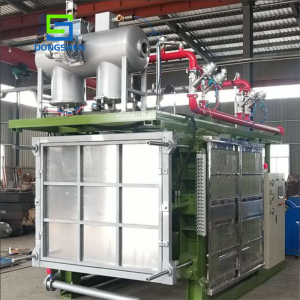Understanding the Hot Wire Foam Cutter Mechanism
The hot wire foam cutter is a versatile tool used extensively in various industries, from small-scale craft projects to large industrial operations. It utilizes a simple yet effective mechanism: a thin wire, often made of nichrome, is heated by an electrical current.
The Science of Thermal Division
Unlike traditional cutting tools, which rely on mechanical force, the hot wire foam cutter employs thermal division. When the wire heats up, it melts the foam in its path, providing a clean, precise cut without generating dust. This precision makes it invaluable for creating intricate designs from materials like expanded polystyrene (EPS), commonly used for insulation and packaging.
Identifying Hazards in Foam Cutting
Cutting foam with a hot wire introduces several hazards that users must be aware of to ensure safety. The process generates fumes that can be harmful, and the equipment itself presents risks if not handled properly.
Key Hazards
- Release of potentially toxic fumes, including styrene monomer.
- Risk of burns from the heated wire.
- Potential for fire if the foam ignites.
Health Risks from Fumes and Particles
The transformation of foam from a solid to a gas during cutting releases fumes into the air. These fumes can pose serious health risks if inhaled, making PPE essential to the process.
Exposure to Harmful Chemicals
When polystyrene foam is heated, it can release styrene monomer, carbon monoxide, and benzene, among other substances. Long-term exposure to these chemicals can lead to respiratory issues, neurological effects, and more severe health conditions, as suggested by studies conducted by health safety organizations.
Importance of Personal Protective Equipment (PPE)
PPE is crucial for anyone operating a hot wire foam cutter. It acts as the first line of defense against the hazardous fumes and potential physical injuries.
Essential PPE Components
- A mask to prevent inhalation of chemical fumes.
- Gloves to protect from burns.
- Safety goggles to shield eyes from any unexpected splashes or debris.
Ensuring Proper Ventilation
Adequate ventilation is vital when using a hot wire foam cutter. It helps dissipate the toxic fumes generated during the cutting process, reducing the risk of inhalation.
Implementing Ventilation Strategies
Work in a well-ventilated area, ideally with an exhaust fan or fume extraction system, to draw fumes away from the breathing zone. This setup is especially important in a factory setting where larger volumes of foam are processed.
Temperature and Speed Control
Controlling the temperature and speed of the hot wire foam cutter can significantly influence safety and cut quality. A wire that is too hot or moved too quickly can lead to excessive fume production and increase the risk of combustion.
Optimal Cutting Parameters
Each manufacturer provides specifications for the optimal temperature range for their equipment. Adhering to these guidelines ensures a clean cut and minimizes hazardous fume production. Typically, maintaining a lower temperature that still allows efficient cutting is preferred.
Operator Safety and Training
Proper training is essential for anyone operating a hot wire foam cutter to ensure safety and proficiency. Training should cover both operational techniques and emergency procedures.
Training Components
- Understanding machine controls and safety features.
- Emergency shutdown procedures.
- First aid for burns or inhalation injuries.
Regular Equipment Maintenance Checks
Routine maintenance ensures the foam cutter operates safely and efficiently. Neglecting maintenance can lead to equipment failure and increased safety risks.
Maintenance Checklist
- Inspect the cutting wire for wear and tear.
- Check electrical connections and insulation.
- Test safety features like emergency stops.
Safe Disposal of Cut Materials
Once the foam is cut, safe disposal practices must be followed to minimize environmental impact and safety hazards.
Disposal Guidelines
Partner with a reputable supplier or waste management company that specializes in recycling foam materials. Avoid burning leftover foam pieces, as this releases additional pollutants into the air.
Commitment to a Safety-First Culture
A safety-first culture prioritizes the well-being of operators and compliance with safety standards. It involves continuous education, adherence to safety practices, and fostering an environment where safety is paramount.
Building a Safety Culture
- Regular safety audits and drills.
- Feedback mechanisms for safety improvements.
- Recognition and rewards for safe practices.
Dongshen Provide Solutions
At Dongshen, we understand the importance of safety in foam cutting operations. As a leading manufacturer, we offer machines equipped with advanced safety features and provide comprehensive training for operators. Our solutions include customized ventilation systems and high-efficiency masks to ensure operator safety. Additionally, our partnerships with recycling suppliers ensure environmentally-friendly disposal of foam waste. Trust Dongshen to provide reliable and safe foam cutting solutions tailored to your needs.
User hot search: Electric Hot Wire Foam Cutter
